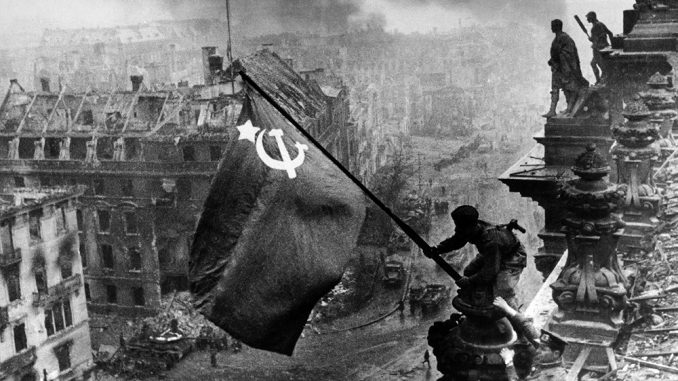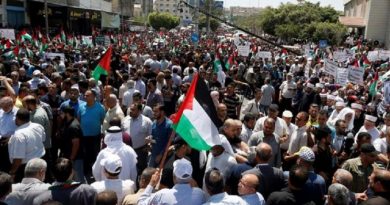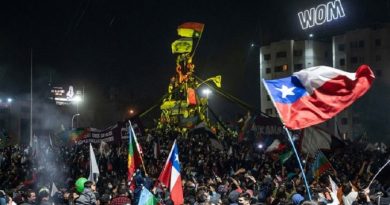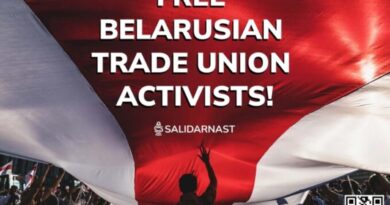VE Day: the true heroes of World War II
He 7 May were fulfilled 75 years after the fall of Berlin and the end of World War II in Europe.
By Vicente Gaynor
The so-called VE Day (victory in Europe). The commemorations of the allied triumph over fascism have the wrong heroes. In 1943, the Nazi war machine that had conquered almost all of continental Europe without defeat in over three years, defeated at the Battle of Stalingrad, considered the bloodiest in history, with more than two million deaths. It was the beginning of the collapse of the Third Reich. The peoples of the occupied countries rose up one by one against the Nazis., as the allied armies advanced into Germany.
The United States and the United Kingdom invaded Italy on the same 1943 and France the following year. From there they advanced to the east while the Red Army advanced from the other direction., towards the German capital. He 20 April began the Battle of Berlin, he 30 Hitler and several of his high command committed suicide, he 2 May the defending forces of the city surrendered and the 8 In May, Marshal Wilhelm Keitel signed the unconditional surrender of the German army., ending the war in europe.
What was World War II?
World War II was essentially a second imperialist war, as Leon Trotsky described it. Both the allied powers and the Nazi-fascist axis struggled to maintain or extend their control over territories, resources, markets and labor. But it was not the only phenomenon.
As usual, war and occupation breed resistance. The peoples of the colonies of both imperialist sides staged rebellions and liberation revolutions against their oppressors, many achieving independence during or after world war. for the soviet people, the Nazi invasion imposed the defense of the conquests of the Russian revolution that were still preserved despite the Stalinist counterrevolution.
The war also pitted two regimes in Europe against each other., the bourgeois democratic and the fascist. The need to defend the rights and freedoms won during decades of class struggle under bourgeois democratic regimes and that fascism came to bury in one fell swoop, would motivate millions of Europeans to confront the Nazi occupation from the very first hour, also confronting them with the local collaborating bourgeoisie.
Who defeated Hitler?
In occupied Europe, the working peoples developed a revolutionary resistance against the German occupation and repression. It was this heroic resistance that weakened and broke the Third Reich.. It is common to see these resistances represented as mere auxiliary support of the allied armies. But, not only is his role in the fall of the Reich grossly underplayed, but it is hidden that the interests, The motivations and objectives of the resistance were diametrically opposed to those of the allied General Staffs..
The defeated bourgeoisies of France, Poland, Yugoslavia or Greece did not play any relevant role in the resistance. Either they fled their countries or they collaborated with the Nazis.. Thus, it was the workers and their organizations who faced and defeated the invader. In the process, they made real revolutions, finding themselves with control of the economy in their hands and a state power vacuum in the face of the collapse of the Nazi occupation.
Regrettably, the intentions of their addresses, mainly the communist parties of those countries, did not coincide with the hope of the victorious peoples to emerge from the horror of war towards a better world, but with the interests of the imperialist allies to rebuild the previous capitalist order.
Who were the allies fighting against??
The final Allied push towards Berlin was intentionally delayed, while the allies negotiated the division of the world and crushed the revolutionary movements that had defeated the Nazis in much of Europe.
In Italy, a wave of strikes turned Mussolini into 1943 and it turned into massive resistance when the Germans occupied the country. Allied troops that invaded from the south, they delayed their advance to give the Nazis time to crush the partisans who had seized power in several Alpine communes.
When they finally got north, the Germans had already been expelled by the partisan workers and workers, who had also occupied the factories in Turin, Milan and Genoa. Then the Yankee tanks took it upon themselves to suppress them. The Italian PC collaborated in the disarmament of insurgent workers and was part of a new government of “national unity” under King Emmanuel III.
In France too, The workers occupied the void that remained after the fall of the Vichi collaborating government, And it was the PC that intervened with the slogan of “producing first” to rebuild the bourgeois industry and the capitalist state.
In Greece, The armed resistance had released most of the country for when the English troops arrived at the end of 1944, With Churchill's instructions to act "As if they were in a conquered city where a local rebellion takes place”.
In the repression that followed, The allies massacred 50.000 Greeks, They restored the monarchy and imposed a right dictatorial government. They had the support of the PC, whose leader Sandos then said that "Greece belongs to a region of Europe in which the British assume all responsibility”.
The Soviet advance towards Berlin was also interrupted by "inopportune" revolts. This is the case of the Warsaw Survey in 1944, directed by the national resistance of which the PC was part. The Red Army had pushed the German troops to the west side of the Vistula River when the uprising exploded. Soviet troops settled from the east side, But they refused to help the insurgents, even preventing US and British planes that recharged fuel behind their lines, they launch provisions to the Polish rebels.
An independent Poland was contrasted to Stalin's plans, that told Churchill that the uprising was a "reckless and terrible adventure”. The Soviet troops observed from the shore of the viewula for two months how the Germans destroy.
An international task division
A few months before Berlin's fall, Churchill, Roosevelt and Stalin got together in Yalta. It was the key summit in a series of meetings that had started in Tehran in 1943 And they would continue in Potsdam already finished the war, in which allied leaders configured the post-war world.
Divided the world into areas of influence of each other. Supposedly Churchill passed a role to Stalin with a list of countries and percentages and Stalin called it with a blue pencil. But Yalta was much more than a geopolitical distribution.
The defeat of the German army in Stalingrad at the beginning of 1943 marked the turning point of the war. The Nazi advance was stopped and its long agony of setbacks began until its inevitable military defeat. But it also marked a hinge in the world class struggle.
The most widespread and deep world revolutionary rise in history broke out. Oppressed workers rose against fascist occupations in Europe, against Japanese occupation in China and Indonesia, against colonial oppression in India and Africa, In the whole world the working peoples rose. Never as the world socialist revolution was never so raised.
Those gathered in Yalta shared fear. I linked the fright, No of Nazism, whose defeat was already a mere matter of time, but of the revolution. The three remembered very well how World War I had ended revolutions throughout Europe. The three remembered how close the capitalist system fell when the revolution that began in Russia in 1917 expanded to Germany and the rest of the continent. And the three were determined to defend their interests, preventing something similar to happen again.
What was agreed in Yalta was not a simple territorial distribution, but a division of counterrevolutionary tasks in a common effort to stop the world -class world assert. For Stalin and the PCs, guaranteeing the agreement did not imply a non-intervention passive in the areas that corresponded to Western imperialism, but an active collaboration in deactivating, disassemble and defeat revolutions, and in rebuilding the bourgeois states and the capitalist economy in Western Europe. In return, They were integrated into the regimes of those countries, completing their bankruptcy as organizations of the working class.
Nevertheless, contradictorily, Stalinism was strengthened after war, Despite having betrayed the greatest revolutionary opportunity in history. Unlike what happened when the socialist parties of the Second International chapted in World War, At the end of the Second War, The revolutionary forces had been effectively crushed by fascism and the stalinist counterrevolution. Trotsky himself had been killed in 1940. Without an alternative address that was filed, Once the revolutionary wave that defeated fascism was crushed, Stalinism managed to erect himself as the hero who beat Hitler and the owner of "really existing socialism". The images of the Soviet flags flying victorious about Berlin allowed him to project that deception to the entire world.
The anniversary of the defeat of fascism in Europe should serve to commemorate the true heroes of World War II, The millions of workers who resisted and defeated the Nazi beast, No to the imperialist and stalinist genocides who drowned those workers and their blood revolutions.




